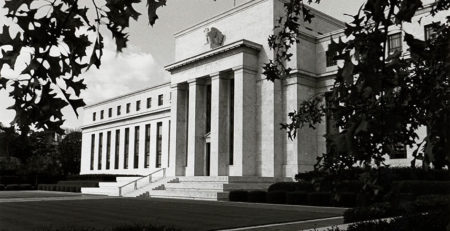Auditing the Federal Reserve
The ostensible purpose of the Federal Reserve is to maintain balance in the economy. By raising and lowering the interest rate, purchasing and selling securities, and similar financial acts, they’re supposed to be able to keep economic disaster at bay.
At least, that’s the way it is in theory. In actuality, there have been a number of market crashes and other financial cataclysms since the Fed’s establishment in 1913, from the crash of 1929, to the market collapse of 2008. These disasters keep occurring despite the Fed’s intervention. In fact, some would argue that they come about because of the Fed’s intervention and that the control is hurting our economy, rather than helping it.
To this end, a bill has been introduced in both Congress and the Senate that would provide Congressional oversight over all Fed decisions on monetary policy. The bill, first proposed in 2009 by then-Congressman Ron Paul, has been approved by a House committee and is now waiting to go before Congress.
How the Fed Hurts the Economy
The Federal Reserve Board takes enormous power over the nation’s economy and financial wellbeing and puts it solely in the hands of 12 people. They vote on whether to raise or lower the interest rate, which has huge and far-reaching repercussions on everything from inflation to the stock market to the unemployment rate and more.
They claim that they exercise this power in order to maintain balance in our economy, but in actuality, the Fed is what’s responsible for our financial ruin. By buying securities to supply the reserves, they essentially create money from nothing. It sounds like a magic trick, but what it really does is create inflation. Since 1913 when the Fed was launched, the U.S. dollar has lost around 96% of its value!
Additionally, their practice of artificially manipulating the interest rate has time and again created market bubbles, driving stock values higher, only to see them come crashing down again, once reality catches up with them.
The Bill
As previously mentioned, this bill to monitor the Fed’s activities has been before Congress before. In 2009, Congressmen Ron Paul and Alay Grayson introduced the Federal Reserve Transparency Act. It passed in the House, but failed in the Senate. A year later, they tried again, with the help of Bernie Sanders in the Senate. Over time, the Senate version of the bill was ultimately changed to the point where little if any of Grayson and Paul’s original intent remained. And again, the bill passed in the House but died in the Senate.
Now that both the House and Senate have a Republican majority, however, the people who have fought so hard to reign in the Fed feel it’s a perfect time to try the bill again.
To understand the bill, first we need a bit of background. The Fed does currently release audits of its finances, but the way in which it decides to make policy is kept secret. Transcripts of policy meetings aren’t released until five years after the fact. This new bill would increase transparency, providing for government oversight on those policy meetings, rather than holding them behind closed doors.
Some members of Congress disapprove of having this kind of political interference with Fed policy. They feel that the objectivity of the Fed would be compromised by partisanship. However, supporters of the bill believe that this will actually help monetary policy, rather than hindering it, by implementing a system of checks and balances currently lacking in that area.
Now that this bill has been approved by the committee, it can go before the House to be voted on. Though it failed to pass before, there’s a good possibility that, in the current political and economic climate, it will have more support. Only time will tell how things will play out, but if it does pass, chances are it can help shape this country’s economic future for years to come.






